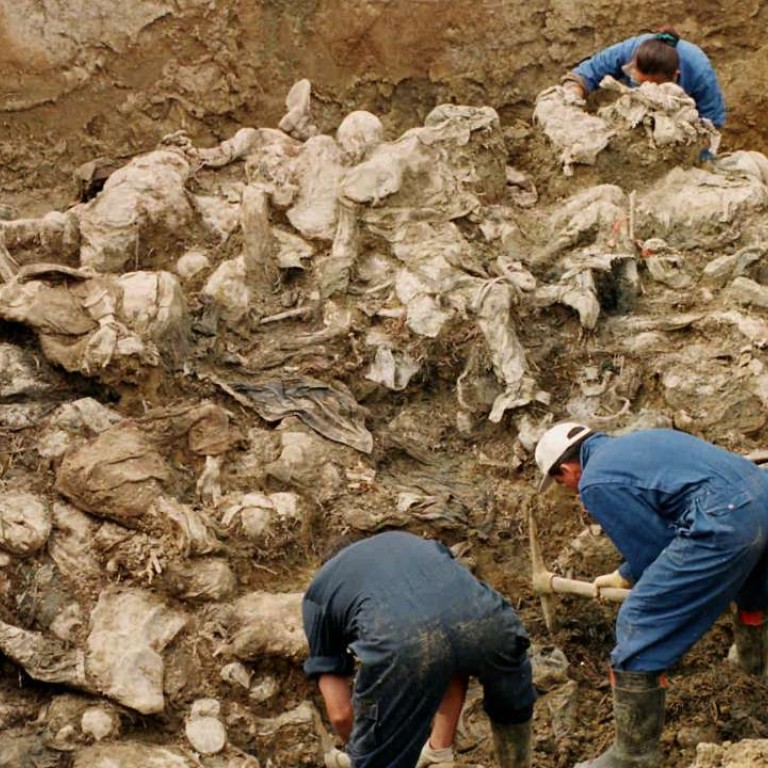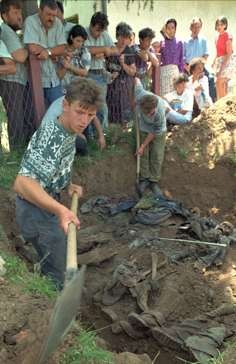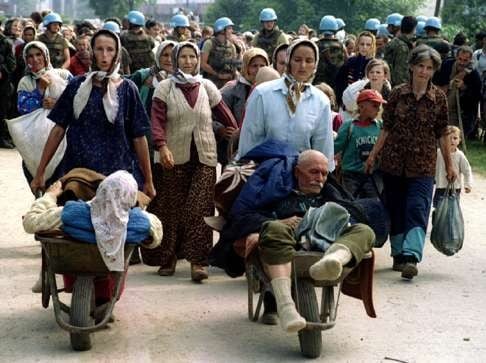
Book review: The Butcher’s Trail looks at how Balkan war criminals were finally brought to justice
The hunt for Yugoslav warlords, the long process of bringing them to a reckoning, and the international ramifications are brilliantly captured by Julian Borger in this superb account

by Julian Borger
Other Press
4.5/5 stars
Justice looks best from a distance, its elegant form unblemished by compromise and expedience. So at first glance the story of the Balkan warlords from the 1990s being held to account is satisfying: every single one faced justice.
The International Criminal Tribunal for the former Yugoslavia, known as the Hague tribunal, got their men – and one woman. It took until 2011 for the last to be rounded up; and Radovan Karadžic, the bouffant brute who led the Bosnian Serbs, only last week was convicted of genocide and crimes against humanity and sentenced to 40 years in prison.
Some hold that slow justice is no justice, but when it comes to international justice more patience is required. From the murk of the battlefield, the Hague tribunal hints tantalisingly at rare moral clarity, the principle that some crimes are so vile there can be no hiding place for the culprits. And vile many of the crimes certainly were.

What Julian Borger has achieved in this superb account of the tribunal’s manhunt is much more than a litany of these crimes. It is an elegantly written, powerfully convincing reckoning of how the world stumblingly faced up to a reality that should not have been: war crimes in modern Europe. He focuses on the manhunt as a single thread in the complex Balkan story, partly as a way to reveal how that region influences our wider world today, through rendition, jihad – and the delicate flower of international law.

“The court came into being as an exercise in penance and distraction, the unstable product of high ideals and low politics,” Borger writes. “The mass atrocities would not be prevented, but they would be judged after the victims were dead.”

The bigger powers were in effect shamed out of their paralysis in Bosnia when Polish special forces, serving in neighbouring Croatia, boldly carried out the first detention operation of a war crimes suspect in June 1997. Their courage proved contagious. Weeks after Tony Blair’s government replaced the risk-averse Conservatives, the SAS were ordered to seize three Bosnian Serbs. The results were mixed: one dead, one escaped and one captured using a ruse de guerre that came close to Britain itself breaching a Geneva convention.

Throughout The Butcher’s Trail there is a sense of the Hague tribunal succeeding in spite of, not because of, the international community. Poorly funded to begin with and undermanned, it became effective because a small number of committed individuals were prepared to explore the bounds of international law: the chain-smoking prosecutor, the tubby police sergeant from Stratford, the US special forces officer who carried a gorilla suit in his baggage.
Borger is honest about the muddles and misunderstandings. He recounts America’s early muscle-bound efforts to go after targets. Planes laden with special forces and staff officers keen to get in on the action were a dead giveaway when they flew into Bosnia. No surprise that the targets vanished into thin air by the time the operational juggernaut creaked into action.

Borger’s description of the fall of Slobodan Miloševic, the Serbian leader largely responsible for the extreme nationalism that destroyed Yugoslavia, is excellent. Miloševic’s erstwhile allies in Belgrade turned on him one by one until he suffered the 21st-century version of defenestration: he was handed over meekly to the tribunal, cuffed and cowed.
The most poignant part for me is Borger’s discussion of how the war criminals got on once incarcerated in Holland. Ivo Andric famously wrote that “Bosnia is a country of fear and hatred”, yet in a Dutch prison exercise yard the same men who 20 years earlier slaughtered each other would happily play football and cook each other meals using recipes from home.
The Guardian

